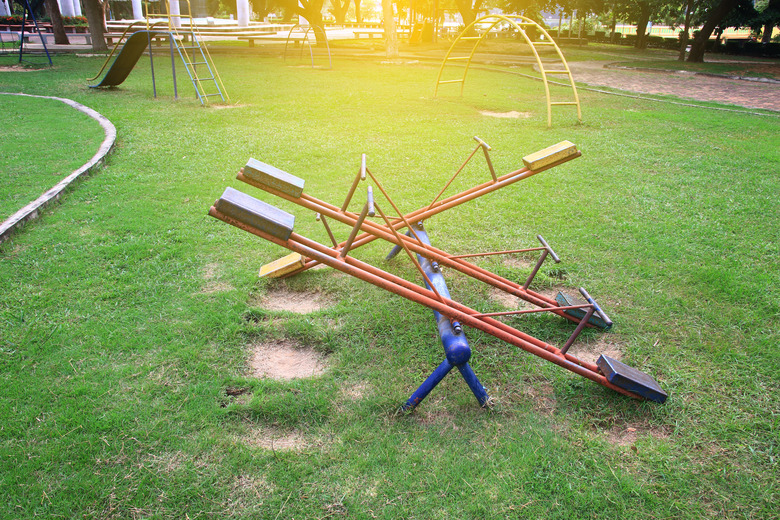How To Calculate Mechanical Leverage
A lever redirects effort force from one end and transfers it to the other end as load force. By studying the ratio of effort force to load output, easily calculate the mechanical advantage of a simple lever. This requires knowing the output force for any given input force. Because levers operate by rotational torque, calculate mechanical advantage by using the arm lengths of the lever.
Step 1
Measure the distances between the fulcrum, or balance point of a lever and each end.
Step 2
Divide the length of the lever's effort arm by the length of its resistance arm. According to Utah State University, the effort arm is the input force and the resistance arm is the output force.
Step 3
Simplify the ratio to lowest terms; for example, a lever with an effort arm length of six meters and a resistance arm length of four meters would have a mechanical leverage of 3-2, or 1.5. This applies for first- and second-class levers. First-class levers have a fulcrum between the effort force and the resistance. Second-class levers have the resistance between the fulcrum and effort force, such as a wheelbarrow.
Step 4
Express the mechanical advantage of third-class levers — levers with the effort force located between the fulcrum and load — as a fraction less than one.
Things Needed
- Calculator
- Ruler
Cite This Article
MLA
Smathers, Michael O.. "How To Calculate Mechanical Leverage" sciencing.com, https://www.sciencing.com/calculate-mechanical-leverage-2828/. 13 March 2018.
APA
Smathers, Michael O.. (2018, March 13). How To Calculate Mechanical Leverage. sciencing.com. Retrieved from https://www.sciencing.com/calculate-mechanical-leverage-2828/
Chicago
Smathers, Michael O.. How To Calculate Mechanical Leverage last modified March 24, 2022. https://www.sciencing.com/calculate-mechanical-leverage-2828/
